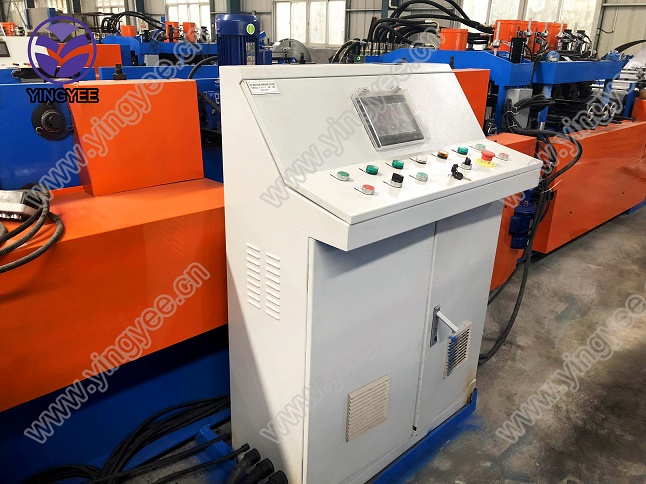
Automatic Adjustment of C-Z Purlin Sizes in Roll Forming Machines
In the modern construction and manufacturing industries, efficiency and adaptability are paramount. One of the innovative solutions that have emerged to address these demands is the automatic adjustment system for C-Z purlin sizes in roll forming machines. This technology not only streamlines production processes but also enhances the precision of manufactured components, catering to a variety of construction needs.
Understanding C-Z Purlins
C-Z purlins are structural components used primarily in steel framing systems. They serve as supporting structures for roofs and walls, providing strength and stability. The design of these purlins can be modified to cater to different load requirements and architectural designs, leading to a demand for varying sizes. Traditionally, adjusting the size of these purlins required manual intervention, which was time-consuming and prone to errors.
The Role of Roll Forming Machines
Roll forming machines are specialized equipment designed to bend and shape metal into specific forms. The process involves feeding a continuous strip of metal through a series of rollers, each progressively bending the metal to the desired profile. This technique is ideal for mass production, but the challenge lies in altering the dimensions of the purlins efficiently.
Automatic Adjustment Technology
Automatic adjustment systems in roll forming machines leverage advanced technologies such as servo motors, PLCs (Programmable Logic Controllers), and sensors. These components work together to provide precise control over the size of the output. The automation process begins with the input of desired purlin dimensions into a central control system. This can be done via a user-friendly interface where operators can input specifications for multiple sizes seamlessly.
Once the parameters are set, the machine's control system automatically adjusts the roller positions and the feeding mechanisms to create the desired C-Z purlin size. This process significantly reduces setup times, minimizing downtime between production runs. Additionally, it enhances accuracy by eliminating human error during manual adjustments.

Benefits of Automatic Size Adjustment
1. Increased Productivity With automatic size adjustments, roll forming machines can switch between different purlin sizes quickly and efficiently. This not only accelerates production but also allows manufacturers to respond promptly to varying client demands.
2. Enhanced Precision The integration of advanced sensors ensures that adjustments are made with high precision. This results in consistent quality across all produced purlins, reducing waste and the need for rework.
3. Flexibility Automatic adjustment systems allow for a wide range of sizes to be produced on a single machine without significant downtime. This versatility supports manufacturers in fulfilling diverse project requirements without investing in multiple machines.
4. Cost Efficiency By reducing setup times and minimizing waste, automatic adjustment systems contribute to overall cost savings in the production process. Lower operational costs translate into more competitive pricing for end-users.
5. User-Friendly Operation The simplicity of the digital interface means that operators do not require extensive training to manage size adjustments. This further streamlines the workflow and enhances workplace safety.
Conclusion
The automatic adjustment of C-Z purlin sizes in roll forming machines represents a significant advancement in manufacturing technology. By combining efficiency, precision, and flexibility, manufacturers can meet the growing demands of the construction industry while minimizing costs and improving output quality. As this technology continues to evolve, it will undoubtedly play a crucial role in shaping the future of structural component production, positioning companies at the forefront of innovation in an increasingly competitive market. Embracing such advancements not only enhances operational efficiency but also aids in meeting the sustainability goals of the industry by reducing material waste and energy consumption.